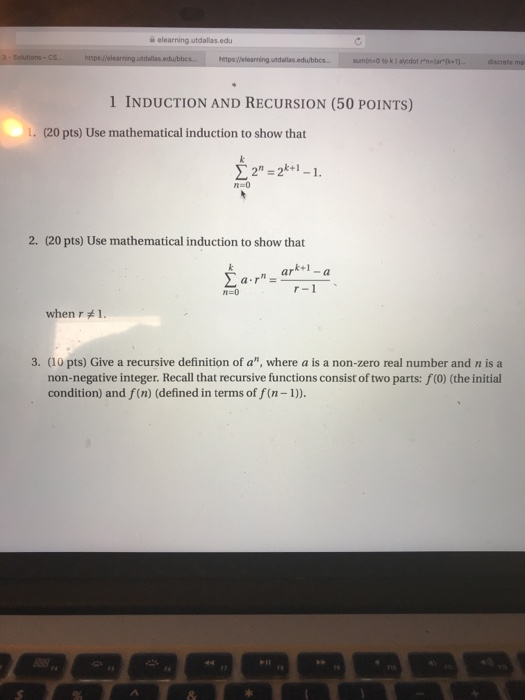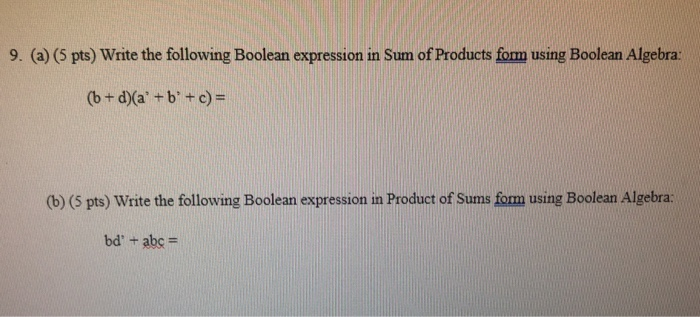Question
(a) Define the terms local error and order for an ODE formula. What is the order of each of the methods (1) and (2)? [2
(a) Define the terms local error and order for an ODE formula. What is the order of each of the methods (1) and (2)? [2 marks] (b) Giving answers to 2 significant decimal digits of accuracy, compute the solution of the ODE for xn = 0, 0.1, 0.2, . . . 1.0 for each method. Tabulate your answers. The exact solutions to 2 significant digits are: 1.0, 0.61, 0.37, 0.22, 0.14, 0.082, 0.050, 0.030, 0.018, 0.011, 0.0067 Assume the exact value of y(0.1) for method (2). [7 marks] (c) Which method is more accurate initially and why? Explain the behaviour of each method as x increases. [3 marks] (d) Solve the ODE. Find a general term for yn in method (1) and show that the absolute error in (1) will be small when n is large. Without performing any further calculations, how do you expect the absolute error in method (2) to behave when n is large? [5 marks] (e) Discuss briefly the suitability of formulae (1) and (2) as predictors for predictor-corrector methods in respect of order and stability
Arithmetic encoding compactly represents a string of characters by an enormously precise number in the range [0,1) represented in binary by a finite sequence of digits following the decimal point. What is remarkable is that this number can be processed efficiently using only fixed point arithmetic on reasonably small integers. As a demonstration, if the original text contained only the characters A, B, C and the end-of-file mark w, such text can be arithmetically encoded using only 3-bit arithmetic. Illustrate how it can be done by decoding the string 101101000010 on the assumption that the character frequencies are such that the decoding tables of size 8 and 6 are, respectively, wAABBCCC and wABBCC. The first few lines of your working could be as follows: 0 Your answer should include a brief description of how the decoding algorithm works. [20 marks] 2 Computer Design (a) What is microcode and how does it differ from assembler? [6 marks] (b) In assembler, branch instructions are used to change the flow of control. How can flow control be determined in a microcode environment? [4 marks] (c) With the aid of a diagram, explain what a feedback path (sometimes called a bypass) is and how it is used to improve the throughput of a pipeline. [6 marks] (d) What is a branch delay slot? [4 marks] 2 CST.2002.13.3 3 Digital Communication I Define a resource in a digital communication system as anything whose use by one instance of communication prevents simultaneous use by another. Channel capacity is one example. (a) Give two more examples of resource in digital communication systems. [4 marks] (b) For the three resources, indicate how the amount of total resource can be increased. [6 marks] (c) How are allocations of each of these resources to instances of communication performed? [10 marks] 4 Business Studies (a) Explain the differences between (i) credit and debit; (ii) cash-flow and profit & loss statements; (iii) equity and debt finance; (iv) NPV and IRR; (v) asset and DCF based valuation.
(b) A certain small software company has assets of about 100K (not including development work-in-progress), and an average cash-flow of about 15,000 per month, with a net profit of around 2000 per month. They are developing, but have not yet completed, a new graphical search engine into which they have invested about 100K of design and programmer time. The founders have invested about 150K, mostly in equity, and there is a long term debenture of 100K. Provide a range of valuations for the company. Include notes explaining your assumptions and the basis for each valuation. [10 marks] 3 [TURN OVER CST.2002.13.4 5 Comparative Programming Languages (a) Briefly discuss the compromises that must be made when standardising a programming language. [8 marks] (b) Discuss the relative merits to (1) the application programmers and (2) compiler writer of the following ways of specifying a programming language. (i) A concise readable user manual for the language in English containing many useful programming examples. (ii) A very long and highly detailed description, in English, of every feature of the language. This manual contains no programming examples. (iii) A concise but rigorous description using a formal grammar to describe the language syntax and making extensive use of mathematical notations taken from set theory, ?-calculus, predicate calculus and logic to describe the semantics of the language. (iv) The source code for a clean and elegant machine-independent interpretive implementation of the language.
(a) What is the von Neumann bottleneck and why can it limit performance on today's RISC machines? [4 marks] (b) What computer architecture techniques are used to mitigate the effects of the von Neumann bottleneck on RISC machines as compared to early computers like EDSAC? [4 marks] (c) How do RISC machines enforce memory protection for applications with disjoint data sets? [4 marks] (d) What is segmented addressing (e.g. as used on x86 machines)? [4 marks] (e) If non-volatile random access memory had similar performance and cost to DRAM, how would this change the memory hierarchy? Justify your answer. [4 marks]



4.3 Induction and Recursion 1. Suppose f(0) -6 and f(n + 1) = f(n) +4 for all n 0. (a) What is f(1)? (b) What is f(2)? (c) What is f(3)? (d) What is f(4)? (e) Give a closed (non-recursive) formula for f(n). - (f) Restate the recursive part of the formula so that you have f(n) stuff (as opposed to f(n+1) stuff).
Step by Step Solution
There are 3 Steps involved in it
Step: 1

Get Instant Access to Expert-Tailored Solutions
See step-by-step solutions with expert insights and AI powered tools for academic success
Step: 2

Step: 3

Ace Your Homework with AI
Get the answers you need in no time with our AI-driven, step-by-step assistance
Get Started


